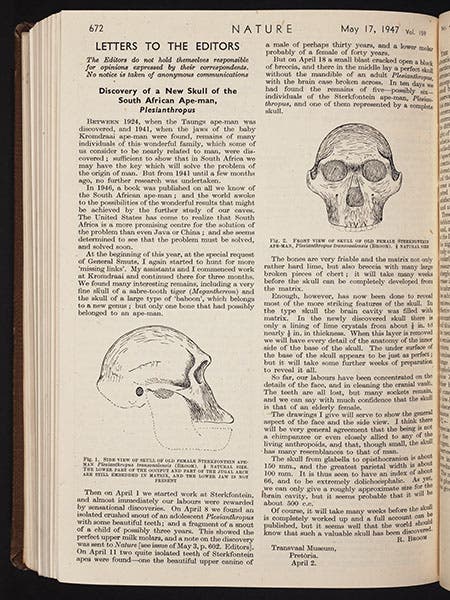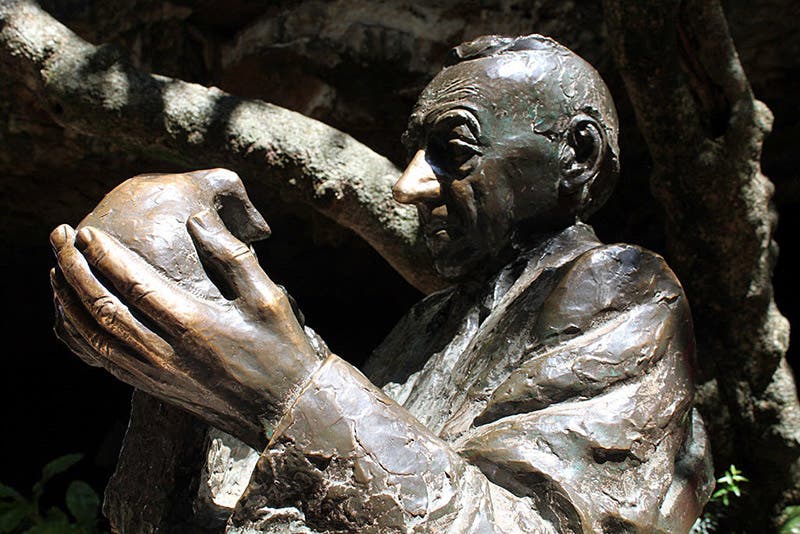Scientist of the Day - Robert Broom
Robert Broom, a Scottish anthropologist who spent most of his life in South Africa, was born Nov. 30, 1866. In 1924, Raymond Dart found a tiny skull at Taung in South Africa, which he thought represented a new human ancestor. He named it Australopithecopus africanus. The anthropology establishment in England gave no credence to the discovery or to its implication that humans had African origins; they thought Piltdown man was a more credible human ancestor than the Taung child. Broom, who had previously made his reputation digging up dinosaurs in East Africa, turned to the defense of his South Africa colleague. In the 1930s and 1940s, Broom found a number of hominid fragments, including a crushed skull, which he assigned to the new species Plesianthropus transvaalensis. He thought they validated Dart's claim that modern humans arose in South Africa, and he attracted a few converts among professional anthropologists, but most continued to deny human affinities for either Australopithecus or Plesianthropus.
Then, on April 18, 1947, Broom and a collaborator, working in a South African quarry named Sterkfontein, blasted apart a chunk of breccia and found within a nearly complete hominid skull. It looked just like a grown-up version of the Taung child. Dubois assigned it to Plesianthropus and announced the discovery in a single-page letter to the editor in Nature, which still had enough room to display several drawings of his find (second image). Since Broom claimed in that paper that the specimen was female, the skull was quickly dubbed "Mrs. Ples” by site workers. Later that same year (1947), Broom contributed an article to Natural History for which he included several photographs of Mrs Ples in situ (first image), and partially reassembled (third image).
Mrs. Ples did the trick. Holdouts were gradually converted to the idea that humans evolved in Africa (it helped that the Piltdown fragments were shown to be fraudulent in 1953). Broom died in 1951 (he was 80 years old when he discovered his skull), so he did not live to see Mrs. Ples incorporated into the genus Australopithecus. But his find has kept the nickname Mrs. Ples to the present day.
The skull is one of the treasures of South Africa (fourth image), and the location where it was found has been included in a World Heritage Site, with the appropriate title "The Cradle of Humankind." At Sterkfontein, visitors can see a bronze bust of Broom, contemplating the skull of Mrs. Ples (fifth image).
Dr. William B. Ashworth, Jr., Consultant for the History of Science, Linda Hall Library and Associate Professor, Department of History, University of Missouri-Kansas City. Comments or corrections are welcome; please direct to ashworthw@umkc.edu.










